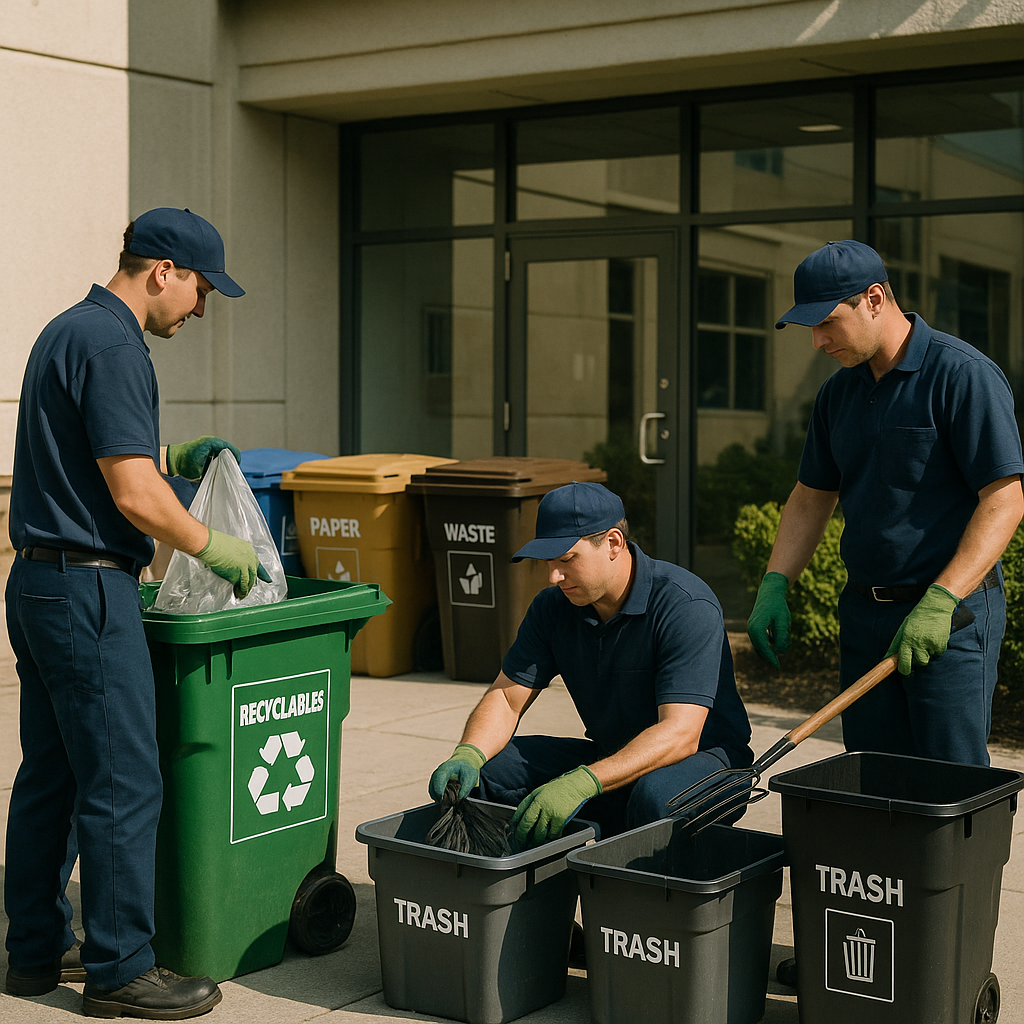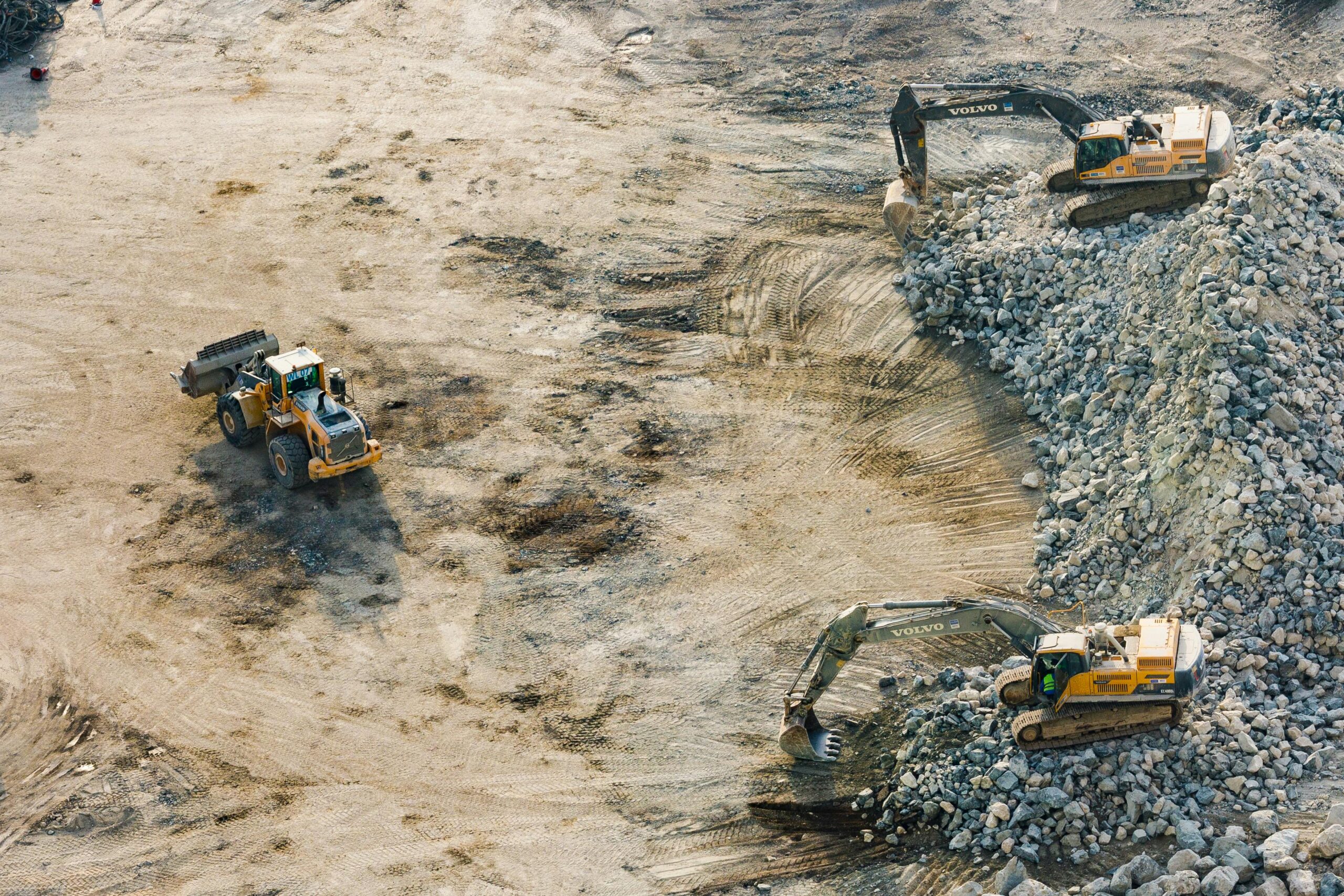5901 Botham Jean Blvd, Dallas, TX 75215
What Is On-Site Waste Management? Explained and Benefits
July 3, 2025On-site waste management involves collecting, processing, and disposing of waste materials directly where they are generated. This approach eliminates the need to transport waste to off-site disposal facilities, offering convenience and potentially reducing costs for businesses and construction projects.
Businesses and construction sites generate significant amounts of waste each day. Instead of transporting these materials to distant facilities, on-site waste management offers a practical solution, addressing waste challenges at the source. This localized method provides several immediate advantages for organizations aiming to enhance their environmental performance.
The core principle of on-site waste management is straightforward yet impactful. By managing waste at the source, organizations can control their waste stream, minimize transportation impacts, and often find more efficient ways to reduce, reuse, and recycle materials that would otherwise be discarded. This approach fundamentally changes how waste is perceived—not as a problem to be relocated, but as a resource to be managed responsibly at its origin.
What Are the Benefits of On-Site Commercial Waste Management?

On-site commercial waste management offers significant advantages, primarily in terms of convenience. By implementing waste management systems directly at your business location, you eliminate the need for scheduled pick-ups or transporting waste to disposal facilities. This streamlines the process and allows your team to manage waste efficiently at the source.
Environmental Compliance Made Easier
Commercial operations often produce waste that could harm the environment if not properly disposed of. On-site waste management helps businesses comply with environmental regulations with less hassle. These systems are designed to properly sort, process, and prepare waste according to current standards.
Compliance is especially important for operations that generate potentially hazardous materials. With on-site solutions, you can implement proper protocols immediately, reducing the risk of improper handling during transport.
Financial Advantages
Implementing on-site waste management can lead to notable cost savings for businesses. Transportation costs decrease significantly when waste doesn’t need to be moved to external facilities. Many businesses also report reduced disposal fees due to better waste sorting and recycling capabilities.
The financial benefits extend beyond direct waste management costs. Businesses often discover opportunities to recycle materials that would otherwise be discarded, creating potential revenue streams from recyclables and reducing disposal expenses.
Improved Operational Efficiency
On-site waste management integrates seamlessly with existing business operations. Staff can dispose of waste immediately without disrupting their workflow, eliminating productivity losses associated with transporting waste to off-site locations.
Systems can be customized to match specific business needs and waste types. Manufacturing facilities benefit from solutions designed for their production byproducts, while office environments can implement systems focused on paper and packaging materials.
Enhanced Workplace Health and Safety
Proper on-site waste management creates cleaner, safer work environments. Immediate processing prevents waste accumulation that could lead to hazards or unsanitary conditions, contributing to overall workplace health and reducing accident risks.
Many modern on-site systems include features that minimize employee contact with waste materials. Automated sorting and compacting equipment reduce manual handling requirements, further enhancing workplace safety by decreasing exposure to potentially harmful substances.
Sustainability Advantages
On-site waste management supports broader sustainability goals that many businesses now prioritize. These systems typically increase recycling rates through better sorting capabilities and immediate processing. The reduced transportation needs also lower the carbon footprint associated with waste management.
Businesses implementing on-site solutions often find it easier to track and measure their waste reduction efforts. This data helps companies demonstrate their environmental commitment to customers, partners, and stakeholders who increasingly value sustainable practices.
The ability to precisely measure waste streams also assists in identifying opportunities for process improvements that generate less waste, creating a cycle of continuous improvement in resource efficiency throughout business operations.
| Aspect | On-Site Waste Management | Traditional Waste Management |
|---|---|---|
| Cost | Decreased transportation and disposal costs | Potentially higher due to transportation and disposal fees |
| Convenience | Immediate processing and disposal on site | Requires scheduled pickups and off-site disposal |
| Environmental Compliance | Easier compliance with reduced transportation | Risk of improper handling during transport |
| Operational Efficiency | Streamlined integration with existing operations | May disrupt workflow with off-site transfers |
| Safety | Cleaner work environment with immediate processing | Potential hazards with waste accumulation |
| Sustainability | Increased recycling rates and lower carbon footprint | Typically less efficient recycling and more transportation emissions |
How Can Construction Sites Implement Effective Waste Management?

Construction sites can implement effective waste management by developing and following a Site Waste Management Plan (SWMP). This structured approach helps construction teams systematically reduce waste generation while improving resource efficiency. An effective SWMP not only benefits the environment but also delivers significant cost savings.
The first step in creating an effective SWMP is conducting a thorough waste audit. This involves identifying all potential waste streams generated throughout the project lifecycle. By understanding which materials will become waste, teams can proactively develop strategies to minimize or eliminate them.
Setting clear and measurable waste reduction targets is essential for any successful SWMP. These targets should be specific, attainable, and aligned with project timelines. Many construction projects now aim for at least 70-80% waste diversion from landfills through recycling and reuse initiatives.
Designing Out Waste
One of the most effective waste reduction strategies is designing out waste from the project’s start. This involves careful planning and material selection during the design phase to minimize offcuts and excess materials. Using standard material dimensions and modular construction techniques can significantly reduce waste.
Specifying materials with recycled content helps close the loop in the circular economy. Materials like recycled aggregate concrete, reclaimed timber, and recycled metal products reduce demand for virgin resources while diverting waste from landfills. Many manufacturers now offer construction materials with high percentages of recycled content without compromising performance.
Designing for deconstruction rather than demolition ensures materials can be easily separated and recovered at the end of a building’s life. This approach involves using mechanical fasteners instead of adhesives, keeping different materials separable, and documenting what materials are used and where.
| Waste Reduction Strategy | Environmental Benefits | Economic Benefits |
|---|---|---|
| On-Site Waste Management | Reduces transportation emissions, lowers pollution, supports biodiversity preservation | Decreases transportation and disposal costs, creates potential revenue from recyclables |
| Recycling Initiatives | Conserves natural resources, reduces landfill usage | Lowers material costs, generates new revenue streams |
| Waste-to-Energy Technologies | Reduces waste sent to landfills, lowers greenhouse gas emissions | Provides renewable energy, creates job opportunities |
| Reuse Programs | Minimizes resource extraction, lowers environmental impact | Reduces need for new materials, increases efficiency |
On-Site Waste Management Practices
Effective waste segregation is fundamental to successful construction site waste management. Providing clearly labeled containers for different materials makes recycling easier for workers. Common segregation categories include wood, metal, concrete, plastic, cardboard, and general waste.
Regular training and education for all site personnel ensures everyone understands their role in waste management. Short toolbox talks and clear signage can help reinforce proper waste handling procedures. When workers understand the importance and methods of waste reduction, compliance improves significantly.
Establishing partnerships with local recycling facilities and waste contractors helps ensure materials are properly processed. Many specialized facilities can now recycle difficult construction materials like gypsum board, asphalt shingles, and carpet. Finding the right partners is essential for maximizing recycling rates.
Supply Chain Collaboration
Working closely with suppliers can significantly reduce packaging waste. This might involve using returnable packaging systems, bulk delivery options, or take-back programs for excess materials. Some suppliers now offer services like just-in-time delivery to reduce on-site storage needs and potential material damage.
Implementing careful inventory management prevents over-ordering and material spoilage. Digital inventory systems can track material usage in real time, allowing for more accurate ordering. This approach minimizes waste while also reducing project costs.
Exploring material exchange programs provides opportunities to reuse excess materials on other projects. Many regions now have construction material exchanges where unused materials can be listed for resale or donation. This prevents useful materials from becoming waste and often creates cost savings.
Monitoring and Continuous Improvement
Regular monitoring and reporting are essential for tracking waste management performance. Keeping detailed records of waste generation and disposal routes provides data for ongoing improvement. Many construction companies now use digital tools to streamline this monitoring process.
Conducting periodic waste audits throughout the project helps identify areas for improvement. These audits can reveal which waste streams are not being effectively managed and where additional interventions might be needed. Each audit provides an opportunity to refine waste management practices.
Celebrating successes and sharing best practices encourages continued improvement in waste management. Recognizing teams or individuals who contribute to waste reduction builds a positive culture around sustainability goals. The lessons learned from successful waste reduction initiatives should be documented and applied to future projects.
What Role Does On-Site Wastewater Treatment Play?

On-site wastewater treatment systems manage and process waste at the source instead of transporting it to distant facilities. These systems treat wastewater from individual homes, businesses, or small clusters of buildings where the waste is produced. The treatment occurs through a combination of natural and engineered processes that break down contaminants before returning water to the environment.
In rural and suburban areas without access to centralized sewer infrastructure, these systems provide an essential service. Nearly 25% of households worldwide rely on septic systems for waste management, including approximately 21.7 million families in the United States alone. This decentralized approach fills a critical gap in our water management systems where installing centralized sewage collection isn’t economically viable.
On-site systems do more than dispose of waste. They act as water quality guardians by removing harmful bacteria, nutrients, and other pollutants that would otherwise contaminate groundwater and surface waters. These systems filter wastewater through mediums including soil, sand, and specially designed treatment units that harness natural biological processes to break down contaminants.
Most conventional on-site systems include a septic tank that separates solids from liquids, followed by a soil absorption field where final treatment occurs. The septic tank allows particulate matter to settle, creating a layer of sludge at the bottom, while oils and greases float, forming a scum layer. Clearer wastewater in the middle flows out to the absorption field, where soil microorganisms complete the treatment process.
More advanced systems may incorporate additional components like aeration chambers, filtration units, and disinfection technologies. These advanced treatment options are particularly important in areas with challenging site conditions such as poor soils, high groundwater tables, or proximity to sensitive water bodies.
Beyond treating waste, on-site systems contribute to water conservation through groundwater recharge. Unlike centralized systems that often discharge treated water directly to surface waters, decentralized systems typically return treated effluent to the local soil, replenishing groundwater supplies. This process completes the natural water cycle and helps maintain adequate water levels in local aquifers.
The effectiveness of on-site treatment depends heavily on proper design, installation, and maintenance. Systems must match the specific site conditions, expected wastewater volume, and treatment needs. Regular maintenance—including periodic pumping of septic tanks and inspection of system components—ensures long-term performance and prevents environmental contamination.
For communities facing water scarcity challenges, modern on-site systems can be designed to facilitate wastewater reuse. With appropriate safeguards and treatment, this water can irrigate landscapes, flush toilets, or serve other non-potable uses. This approach reduces demand for freshwater and illustrates how decentralized systems can contribute to sustainable water management.
As populations grow in areas beyond centralized infrastructure, the importance of effective on-site wastewater treatment will increase. These systems are a practical solution for protecting public health and water quality while enabling development where centralized sewage collection isn’t feasible.
Conclusion: Maximizing Efficiency in On-Site Waste Management
On-site waste management offers significant advantages across various industries. From construction sites to commercial facilities, these practices enhance both operational efficiency and environmental sustainability. Organizations implementing Site Waste Management Plans, source reduction techniques, and on-site sorting systems often report meaningful cost savings while significantly reducing their environmental impact.
The most successful waste management programs prioritize prevention, eliminating waste from the outset through careful planning and material selection. This proactive approach, paired with effective waste segregation and recycling systems, ensures valuable resources are diverted from landfills. Investing in smart waste technologies and employee training establishes long-term solutions that benefit both the bottom line and the environment. For your recycling and waste management needs, contact Okon Recycling at 214-717-4083.
